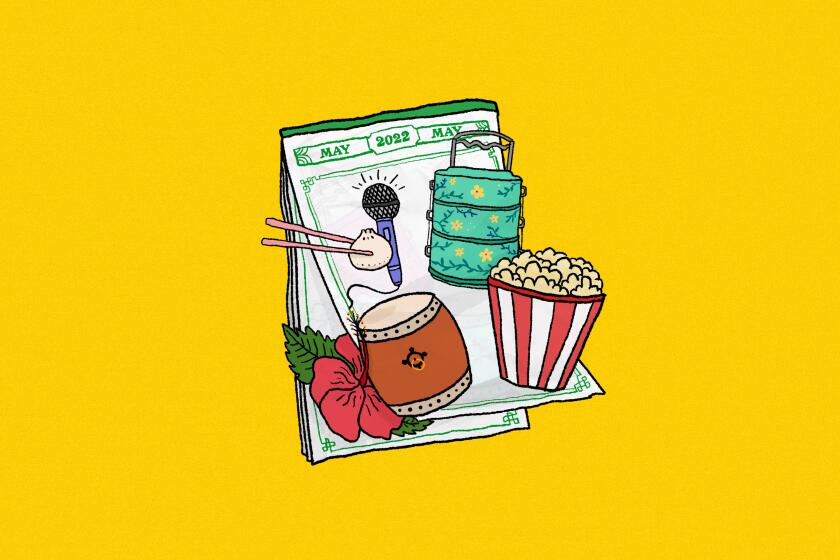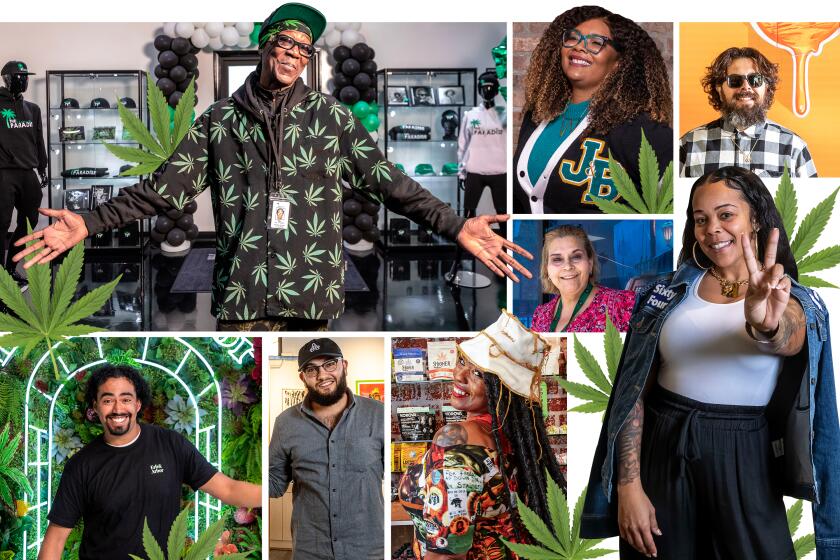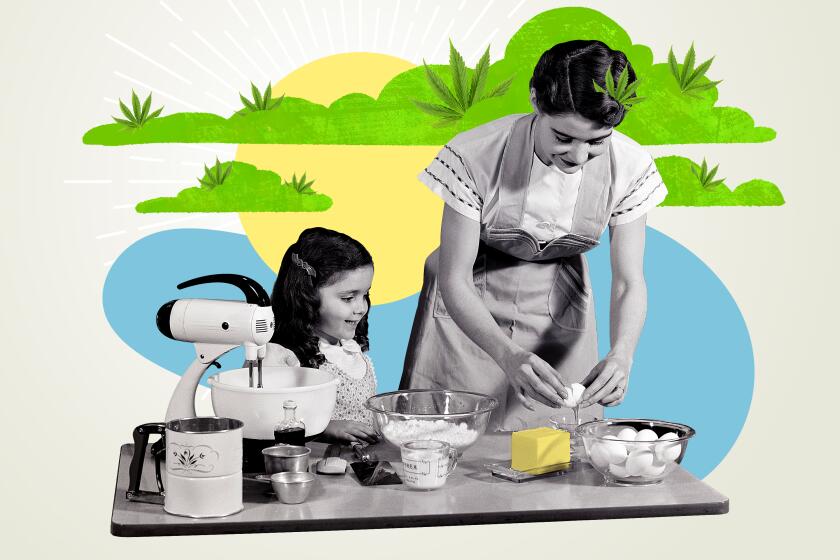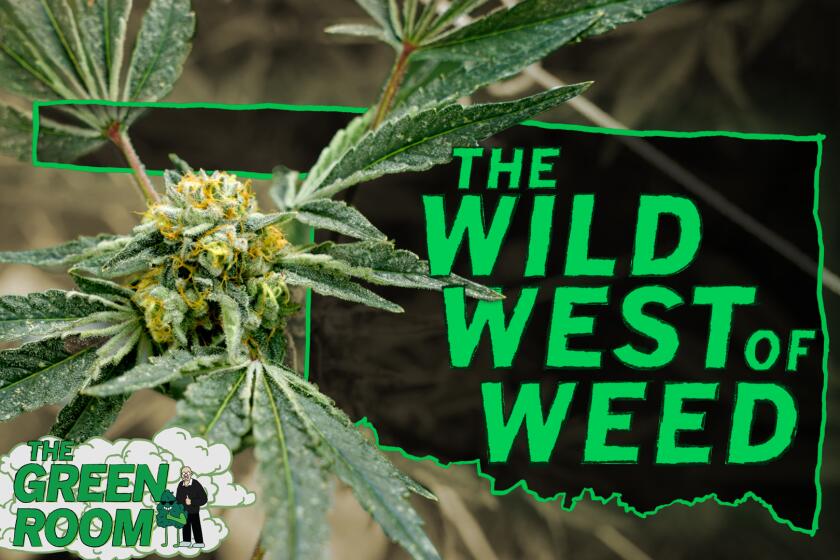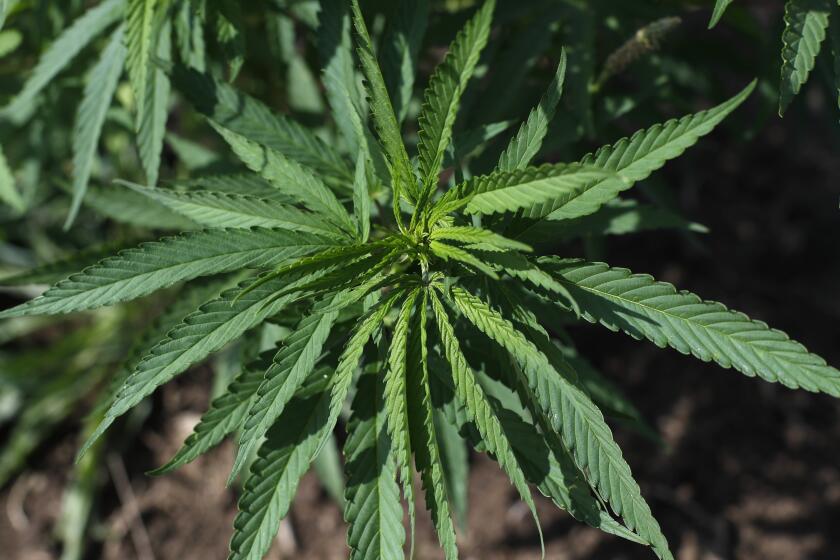They came out of the ‘cannabis closet’ to help other Asian Americans do the same
Sysamone Phaphon and Eunice Kim grew up with very different approaches to cannabis.
For Phaphon, 37, the Bay Area founder and chief executive of KhuenPhu, a CBD wellness brand based on Asian healing traditions, it’s been part of her life for as long as she can remember. Her father grew it in the family garden right alongside lemongrass and chili peppers, and her mother used it as a cooking herb (“especially in her pho broth,” Phaphon says).
Kim, 35, the L.A.-based founder and chief executive of the online cannabis education platform HiVi, became acquainted with the properties of the plant much later in life, seeking it out just five years ago as a way of self-medicating for the anxiety and insomnia caused by “the hamster wheel” of professional life.
But, as Asian Americans (Phaphon is of Lao, Thai and Cambodian heritage, Kim is of Korean descent) working in the cannabis space, they’ve encountered similar stigma and judgment both in their own families as well as the wider Asian community. Using that shared experience as a catalyst, they embarked on an ambitious project to create a pot primer called “Modern Cannabis: A Beginner’s Guide to Conscious Consumption” in an effort to increase education and decrease stigmatization surrounding the plant.
A sort of Weed 101, it touches on the history of the plant (including the war on drugs), explains terms like cannabinoids and terpenes, delves into consumption methods and offers advice on how to read product labels. What makes the project ambitious isn’t its scope — it’s mostly basic, entry-level intel — but that the vetted-by-a-medical-advisor information appears first in 14 pages of English followed by translations into 11 Asian languages: Bahasa, Cambodian, Hindi, Japanese, Korean, Lao, Malay, Mandarin, Tagalog, Thai and Urdu.
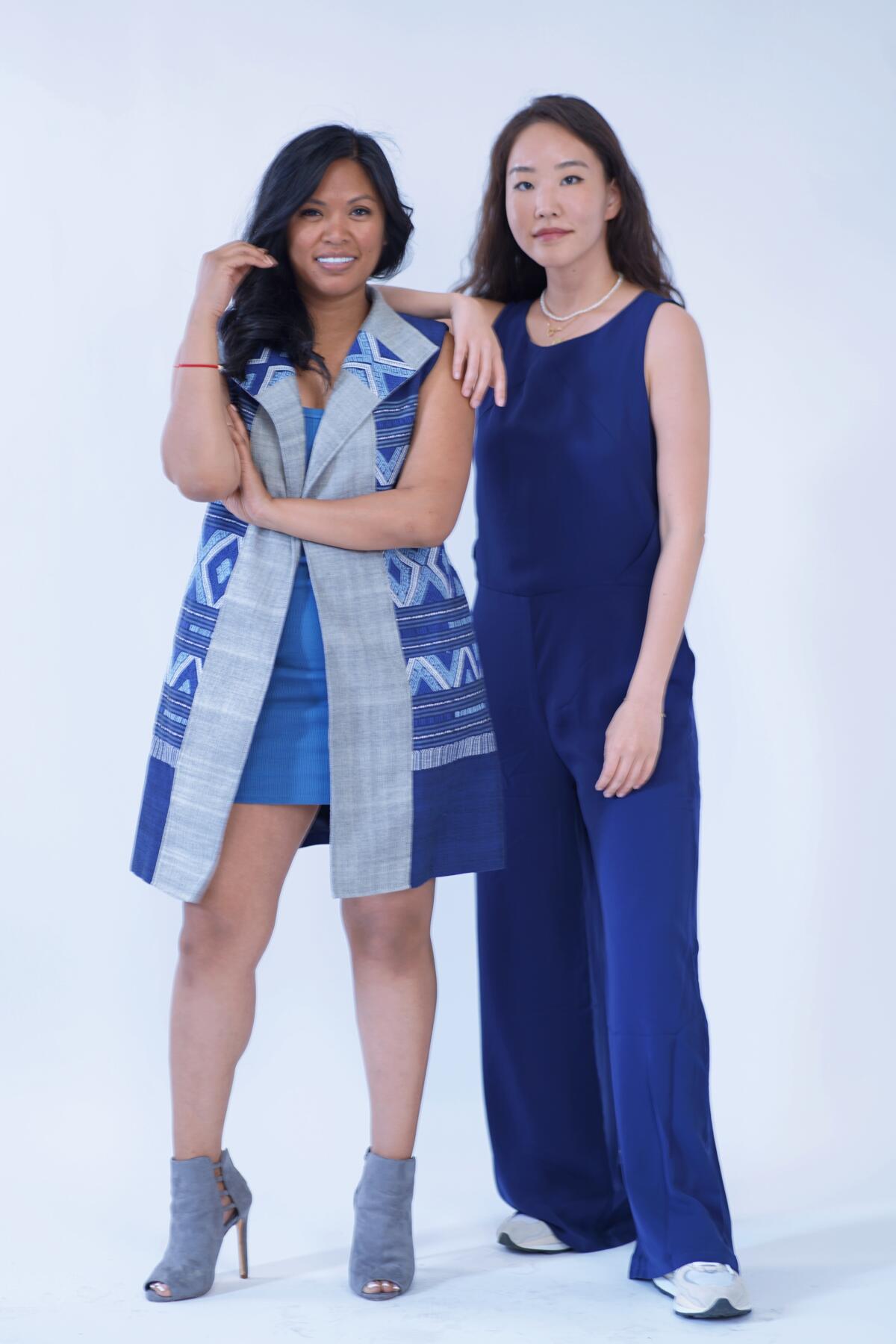
Timed to launch during Asian American and Pacific Islander Heritage Month, a version of the book was posted online at aapicc.com in early May with a couple thousand hard copies being distributed — free of charge — by fellow members of the AAPI Cannabis Collective through their direct-to-consumer channels and dispensary partners.
From comedy to art to film, you can celebrate Asian Pacific American Heritage Month in Los Angeles with these fun events.
In advance of the launch, I caught up with both women via Zoom to talk about their experiences coming out of the cannabis closet, how they hope their project will help others do the same, and a few of the challenges they’ve encountered along the way. Below are highlights from that conversation.
Can you share your ‘coming out of the cannabis closet’ experiences?
Eunice Kim: Your family should be the first to know, right? ... I kept it quiet until HiVi got its first Forbes feature. I’d started consuming cannabis in 2018, and I’d entered the industry with HiVi as a community platform in 2020. And for those two years, they didn’t know about it. I think the way Asian parents work is that they love a little outside validation, and Forbes was great validation, so I decided to come out of that closet with that article.
Sysamone Phaphon: My immediate family is cannabis-friendly, but my cousins, my aunties and uncles, they were all afraid of it. I even had a cousin message me directly and ask me point blank: “Are your products like the other products on the market that are laced with bad stuff and not safe for you?” … I still definitely had to deal with family members who were stereotyping what I was doing, who were afraid to touch and support it.

How have your family’s attitudes changed since you ‘came out’?
Kim: I’m so proud. Over the holidays, I was home, and we had a low-dose edible together ... so we’re on the THC train — slowly. Will I ever smoke a joint with my mom instead of enjoying a glass of wine with her? Probably not. But a low-dose edible is a win.
Phaphon: It’s still a challenge to this day. My parents are definitely OK. My mom uses the [KhenPhu] Elephant Balm [topical] all the time, and my siblings enjoy the [CBD] gummies for their regular ailments. But I still have the challenge of the rest of the family judging what I’m doing.
Opening a cannabis dispensary with a social equity license in Los Angeles takes endurance. Here are resilient owners who fought hard to run pot shops.
How is the stigma different in the Asian community?
Kim: The illegality of it is very scary, especially for the immigrant community. If something is illegal and you go to jail for it — or you have it on your record — your future is set, right? So anything illegal was automatically deemed bad, no questions asked. And then, through propaganda, we see depictions of cannabis being right up there … with heroin and all these really harmful narcotics. The immigrant mentality is that if it’s something that can mess with your brain and turn you into someone who is not you, that’s definitely a negative.
Phaphon: The fact that you could get arrested for it was a big fear for the community, because it also brings shame to your family. And not being shamed is a real big thing in the Asian community. If you have a son or daughter who has a misdemeanor for marijuana, it brings shame to the family, and then you can’t show your face in the community. And that’s really where a lot of the fear and stigma lies. We also have this big stereotype of being a model minority. We’re supposed to be doctors, we’re supposed to be engineers, but seeing a successful stoner isn’t in that picture. If you smoke, you’re never going to be as successful as your cousin who is a doctor. You’re just going to be couch-locked on your parents’ couch.
Do marijuana and motherhood mix? ‘Cannamoms’ share their experiences with stigma, stress and pot parenting.
Who is the target audience you’re trying to reach?
Kim: It’s really for the immigrant community here in the U.S. that maybe have second-generation children who understand or consume but — and this is exactly my situation — aren’t able to have an intelligent conversation with them about the science behind it.

What’s the connection between education and destigmatization?
Kim: It’s the accessibility of that education, which has never been readily available in our native languages. A lot of the translators [we worked with] were seeing this material for the first time, and some of the vernacular didn’t even exist — words like “cannabinoid” and “ terpenes” — these words don’t exist in our Asian languages. Even something that feels as small as translating it into different languages is a huge step in destigmatizing it, because it makes it more accessible.
I think it’s also in bringing over 40 different AAPI founders and leaders in this space together — as sponsors, supporters, creators and collaborators — to amplify it. I think it makes a big statement for the Asian community to see that it’s not just Sysamone and me who are Asian founders in the space.
Was there one cannabis-related term that was particularly hard to translate across all 11 languages?
Phaphon: The whole book was a challenge for our translators, but definitely the long form of the cannabinoids like THC — tetrahydrocannabinol — were challenging. For our Cambodian translator, I literally had to record my voice reading each cannabinoid so they could understand how they’re pronounced in the English language so they could translate them properly into the Khmer language, because they didn’t have the words.
Low start-up costs, less regulation and a central location have local cannabis brands looking east.
It sounds like you were sailing some seriously uncharted waters with this project.
Phaphon: If you think about it, this country is filled with a lot of refugee immigrants, and how did they learn about our different systems in this country? We had to translate for them. There are so many translations in Spanish and Mandarin to help educate people who don’t speak or read English, so why not this as well? How do we help them understand the plant if they can’t even read about it?
Kim: It’s also about misinformation and disinformation in general. With so much content at our fingertips, it’s very easy to be misled and misguided, which has kind of perpetuated the stigma and stereotypes. That’s why we’re using educational content that’s been vetted and verified by our medical advisor, who’s been an integrative medical physician for over 28 years, who understands the science, understands the latest research. Making sure that correct education is now translated and accessible to our communities is really important.
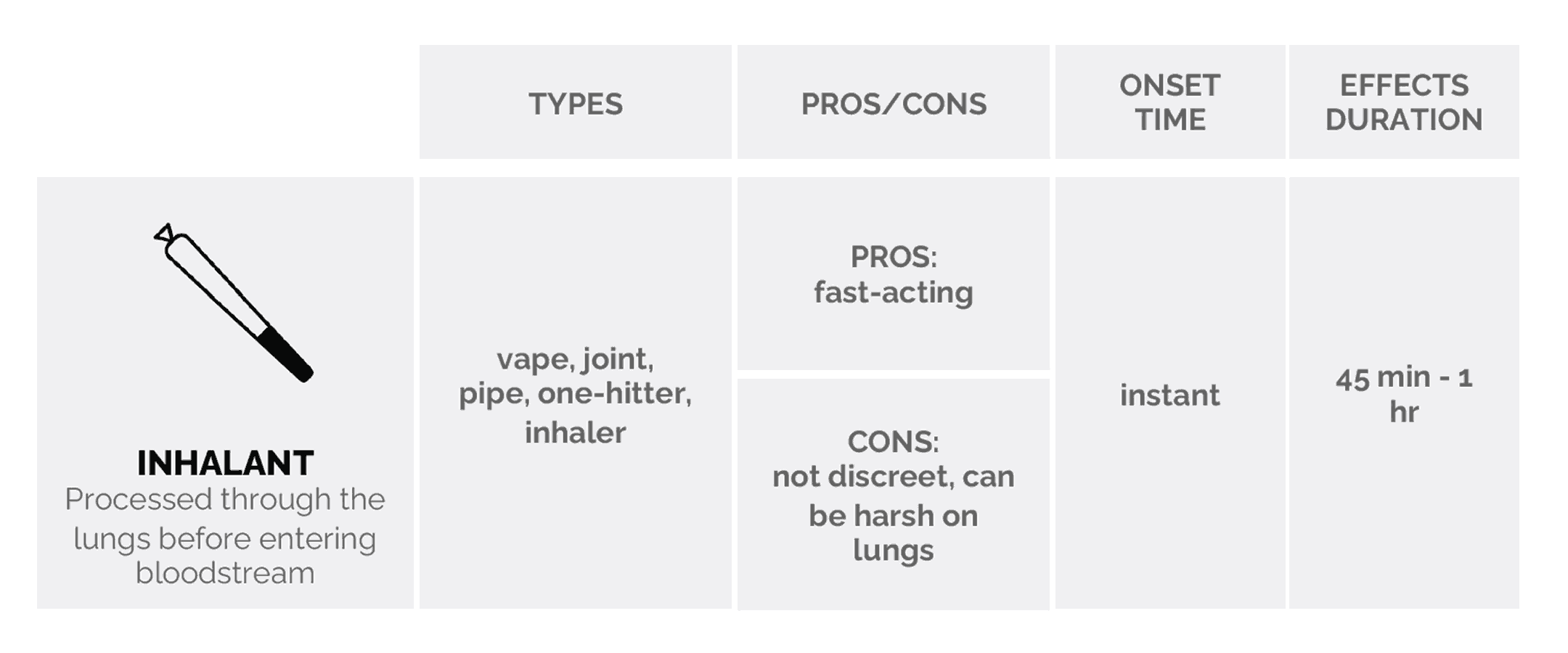
How will you know your efforts are successful?
Kim: Community reception. We know this is not going to be received with open arms the way we — in an ideal world — would love to see it. But we want to see that shift and we want to hear stories from younger generations in our community coming back and saying, “Hey, look. We shared the book and [its] content with our parents, our grandparents. And we’re starting to have more of that candid conversation” or “They’re trying products instead of leaning on their prescriptions.” We’re excited to see that shift happen — even if it’s a slow one.
I’d like to remind the community that Asians have been consuming cannabis for thousands of years
— Eunice Kim, founder and chief executive of HiVi
In addition to what’s in the book, what else would you like to say to the Asian community about cannabis?
Phaphon: Keep an open mind in what we’re sharing.
Kim: I’d like to remind the community that Asians have been consuming cannabis for thousands of years. It’s been a healing plant for generations — since ancient history. The Chinese have the first recorded use of this plant. So whatever convoluted journey it’s been on since, let’s remember that and go back to our roots.
More to Read
Sign up for The Wild
We’ll help you find the best places to hike, bike and run, as well as the perfect silent spots for meditation and yoga.
You may occasionally receive promotional content from the Los Angeles Times.

